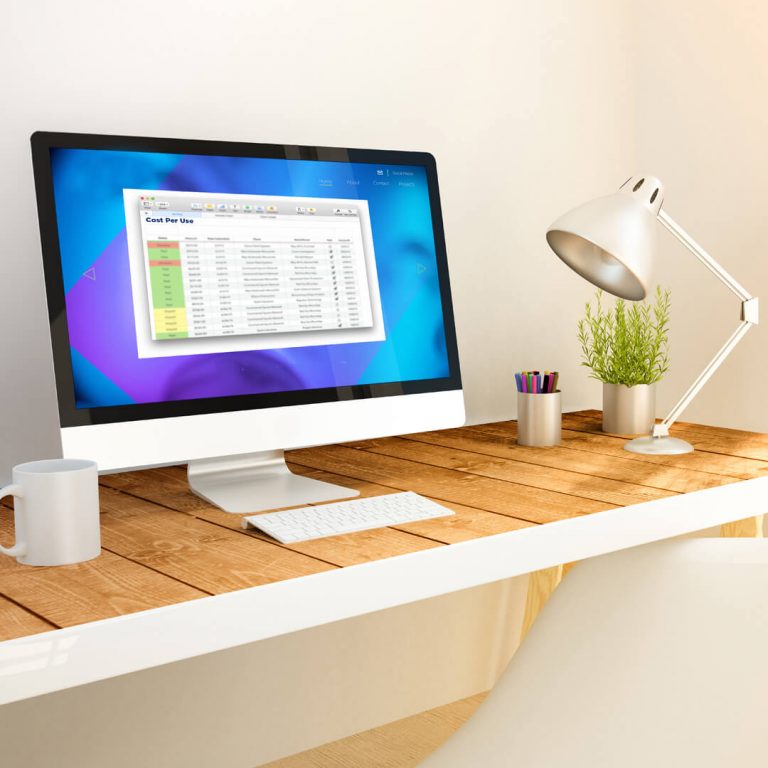We’re all tempted to make impulse purchases from time to time, like buying the newest tech gadgets, or adding the latest trendy fashions to our wardrobe. Unfortunately, these buys can derail our monthly budgeting plans (and often just end up tucked away in the dark corners of our closets). The good news is that you can apply the “Cost-Per-Use” method to each and every purchase you make. You’ll reap the benefits in the form of extra money in your savings account, giving you the motivation to keep applying the (easy) formula!
“Cost Per Use” explained.
A way to look at any purchase is to judge it on a cost-per-use basis. Ask yourself this: How often will I really use this?
Instead of considering the overall price of a product, instead, look at the cost per use: Anticipate how often you will use the product and divide that into the purchase price. For some products, it’s easy to calculate. For example, you need to purchase laundry detergent, and you choose the single-use packs. A container of 42 costs $11.99, before sales tax. That’s 28.5 cents per pack, and that is your cost per use.
How to apply Cost Per Use to your daily purchases.
For most of the items we buy, however, we need to think harder about the cost per use. Let’s look at some scenarios:
You need a new pair of shoes and two styles catch your eye: basic black shoes and some sharp red boots.
The boots cost $100, and you figure you’ll wear those in bad weather. But you live in a generally warm climate with little rain, so maybe you’ll wear them 10 times in the next year. The color may also limit usage. Your cost per use each time you wear them: $10.
What if you buy the shoes instead?
You can wear those black shoes in a variety of situations, both dress and casual. They also cost $100, and you could see yourself wearing them 50 times in the next year.
Cost per use for the black shoes: $2.
You can apply cost per use to just about anything you buy.
- Kitchen appliances are ideal to measure cost per use. Perhaps you’ve wanted a bread maker for some time. Before you splurge on it and spend $100, try borrowing one from a friend; see what goes into the preparation and taste the finished product. If you think it’s easy to use and love the loaf you made, you’ll be able to have fresh bread a few times a week and save money at the supermarket.
If you discover it’s a process and you might not make bread that often—say Easter, Thanksgiving and Christmas—that loaf of bread costs $33 before flour and yeast, if you stop using the bread maker altogether after the first year of use.
- You’ve become a member of your local gym and selected the enticing $75 “bonus” package, giving you access to the pool, a personal training session, group classes, and the sauna. First, if you are hitting the gym every day, congratulations; even at $75 a month, your cost per workout is a reasonable $2.50 per workout. However, if you’re only making it over once a week, cost per use shoots up to $18.75. Review how much you’re using some of the “bonuses” in that bonus package, and see if there’s a more basic offering that might suit your needs and save you some cash in the process.
How to apply Cost Per Day.
Another application of Cost Per Use is to calculate how much something you own costs you per day. This can help you determine if something you own is worth keeping, what you may want to get rid of, where—if possible—you can save, and how long it will take for you to “break even” on your original purchase.
Take your television set: Perhaps you purchased one for $1000, and you’ve owned it for two years. The cost per day is $1.37. In another year, the TV will have paid for itself …if you watch TV every day. If you only watch TV twice a week, however, it will take you over nine and a half years to pay it off. Or a new dining room set at $2000 you’ve owned for three years. Your cost per day would be $1.87. However, if you only use the dining room for Thanksgiving and New Year’s Eve, your cost for the set would jump up to $333 per day.
Thinking of items you own in this fashion can help you understand how cost-effective your overall expenditures are, as well as savings ideas.
How to apply Cost Per Use and Cost Per Day to big-ticket items.
Cost Per Use and Cost Per Day don’t apply only to household items and clothing. Use them as well for big, once-in-a-decade or once-in-a-lifetime purchases.
- Swimming pool. For some, it’s the American dream. Where you live, however, plays a huge role in how often you’d use it, and with a national average cost of $57,938 (to build an inground pool, it isn’t a small investmen)t. Maintenance, repair and utility costs also could be as high as $6,000 a year. You believe you will live in your home 25 years, making the initial cost $2,317.52 per year, plus maintenance. If you live in a climate that will allow you to use the pool 200 days per year, your cost per use could be as high as $11.59 per swim. If you’d use it 100 days per year, figure twice that.
- Your automobile. You’ve been admiring the neighbors’ new SUV. It’s a beauty with a ton of space for their five kids and their sports gear, and you’re due for a new car. It would be great for your annual camping trip and when the family visits. But as empty nesters, do you and your spouse need an SUV rather than a traditional sedan?
At the dealership, you see the sedan priced at $22,090. The SUV’s price is $48,000 – or about $26,000 more. If you keep the car 10 years, that adds up to an additional $2,600 annually. If you really don’t need an SUV as your everyday car – remember the gas mileage won’t be as good, too – you might consider renting a bigger vehicle when you need one instead. It is unlikely that you will spend $2,600 a year on rentals.
We all need a little impulse in our lives, but those spur-of-the-moment purchases that will be used only once or twice can turn into huge wastes of money. By using the Cost-Per-Use method, you can quickly calculate whether an item is a good buy or a budget buster.






Comments Section
Please note: Comments are not monitored for member servicing inquiries and will not be published. If you have a question or comment about a Quorum product or account, please visit quorumfcu.org to submit a query with our Member Service Team. Thank you.